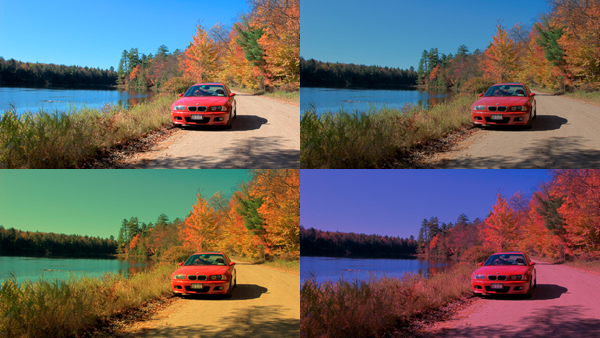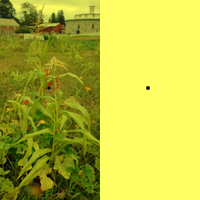What is the Best Color for Sunglasses?
The answer to this one depends on what you are trying to do with the sunglasses. Usually, the answer is gray. But sometimes it is yellow and other times it might be some other color. I'll explain why gray and yellow might be good choices.
Gray is the best choice if you want to see the colors of things in the most natural and accurate way. All gray sunglasses do is remove some of the light of all wavelengths (colors) in equal amounts. It is exactly like just making the light on things a bit less bright. That helps us to see better on very bright sunny days when there is actually a bit too much light for our eyes. It will also make the contrast that we see less. Contrast is the difference we see between bright and dark places in a scene. That is one reason it is not a good idea to wear sunglasses when it is dark. Our eyes are already working hard and the contrast we see is low; adding sunglasses then only makes it harder to see anything at all.
You can see in the pictures above that gray sunglasses make the scene less bright and keep the colors looking nice. So why would anyone choose yellow sunglasses? It turns out that yellow glasses can actually help us to see more contrast and detail in a scene. They do this by removing the blue light. Blue light is the most difficult for our eyes to focus and that makes blue things look a bit blurry. Blue light is also scattered a lot by the air and water in the atmosphere and that reduces contrast, or our ability to see things. Thus, if we remove the blue light with yellow glasses, we are removing the light that is scattered around a lot in the world and the light that is focussed the most poorly by our eyes. The result is a sharper and more contrasty image. That is often helpful for athletes trying to perform well in bright light. Also, the increase in contrast actually gives us the perception that things are brighter, even though the glasses have actually removed some light.
![]()
Explore the NEXT TOPIC at this level.
Explore the NEXT LEVEL on this topic.
Ever wonder ... Why is green often used for surgeons' scrubs?
Updated: Apr. 11, 2011

